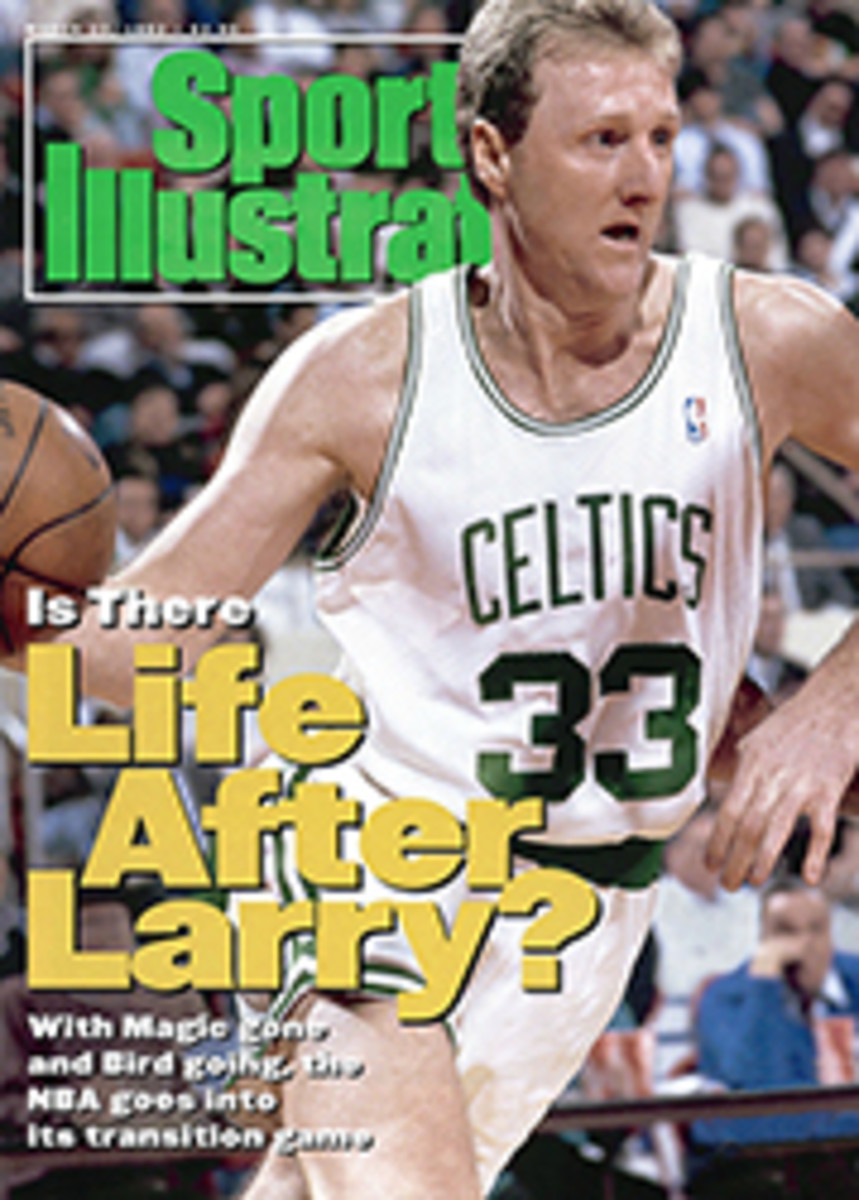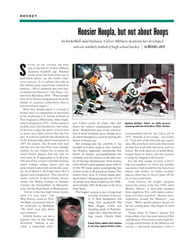
Step Aside, Coach
Football, perhaps the most tactical game in sports, is ideal for video simulations. A computer chip can quickly organize and present the dizzying number of formations and plays required to succeed at today's game. But football is also a fast-paced action sport, which makes it a good subject for all the hands-on thrills of an arcade game. The best electronic simulations are those that entertain with realistic action and also educate by stressing the subtler points of coaching strategy.
Here are three of the best simulations around, two designed for home-arcade units, the other for personal computers. Each of these games should provide hours of fun and add to your understanding of the real thing. If you're going to be an armchair quarterback, you might as well be an informed one.
Because you finally broke down and bought the home video game system that you—er, your kids—had always wanted, your first choice for a football game should be John Madden Football '92 (Electronic Arts, $49.95) for the Sega Genesis. John Madden Football '92 is head and shoulder pads above all other video football games. The graphics are crisp, the sounds are authentic, and the play selections available are thorough enough to please the most sophisticated fan. Twenty-nine teams—26 from NFL cities, one each in Oakland and New Jersey, and an All-Madden team—take the field. Because Electronic Arts doesn't have a licensing agreement with the NFL, the names of teams and players from the league couldn't be used. The loss is minimal. The Denver franchise in Madden '92 wears orange jerseys and blue helmets, plays in an outdoor cold-weather stadium and has a quarterback with a rifle arm. A Bronco by any other name....
The field is shown from an elevated end-zone perspective, and the view scrolls along with the action, creating a stunning three-dimensional effect. On offense you begin a play by controlling the quarterback. If you have called a pass, once you snap the ball, three passing windows will pop up at the top of the screen to show how your receivers are running their routes. Assuming you can avoid the on-rushing linemen—which is no easy task when the pocket is collapsing around you and you're focused on your receivers downfield—you can then try to zip a bullet to your target or loft a soft touch pass over his shoulder. After a completion you automatically control the receiver, and you can juke, spin, lower your shoulder and dive to your heart's delight. Control of defensive players is similar.
The number of plays you can run in any given situation is staggering. On offense you first decide what kind of team you want on the field, such as big, fast, sure-handed or well-rounded. Then you choose from one of six formations, including the ever-so-chic run-and-shoot. Finally you select a play. Of course, after looking over the defense's alignment, you may want to call an audible at the line of scrimmage. If you're on defense, you must try to counter all the above moves from your opponent, but you also have to get your players aligned before the other team sets up. It soon becomes apparent why the Buffalo Bills' no-huddle offense is so effective.
Madden '92 offers 52 offensive plays and 67 defensive options from which to choose. Yet the selections are presented so clearly and intelligently that you will need only a little time before play-calling becomes intuitive. It's up to you to decide whether it becomes predictable.
Perhaps the best option in Madden '92 is a sophisticated instant replay system. You can review any play using a VCR-type feature that offers rewind, frame-by-frame advance and isolated shots taken with an adjustable camera that will let you watch a play from any point on the field. About the only thing you can't do with this instant replay is overturn calls.
Speaking of instant replay, the main hook of Joe Montana II Sportstalk Football (Sega, $59.95) is just that: speaking—of instant replay, of actual plays, of statistics. As the game's title implies, Sportstalk Football features an actual sportscaster doing a play-by-play of the game in progress. The voice of the computer was provided by the San Francisco 49ers' radio broadcaster Lon Simmons, who recorded more than 200 phrases for Sportstalk Football. The computer varies the cadence and emotions of Simmons's voice to fit specific game situations. The computer sportscaster calls out the score, down and distance while the teams are huddling, describes the action as the play unfolds and announces the yardage gained or lost. At halftime Simmons gives a statistical summary of the game to that point. He will even kibitz a little. Calling for a punt in an unconventional situation could bring about this comment: "On second down, the kicking team comes on. I can't believe it."
The game itself, however, has some drawbacks. The field is viewed from a high sideline perspective, which gives everything a squashed, two-dimensional look. It's a little like trying to coach a team while sitting up in the nosebleed seats. This situation is remedied in part by a zoom view that focuses on the area around the ball handler as a play develops. However, once this zoom kicks in, it's impossible to look upheld and see what's happening in front of you. In addition, although all the NFL cities are represented, differences among teams and players are hardly discernible. This game is a Pete Rozelle dream: parity, parity, parity.
The playbook is rudimentary but serviceable, offering 36 offensive and 15 defensive plays. In fact, the sportscasting feature is worth the price of admission by itself. Anybody who has ever played catch in the backyard and imagined quarter-backing a team in the Super Bowl knows the thrill of hearing: "He drops back to pass. He throws deep, into traffic. It's caught! He's to the 30, to the 20—he makes a move—the 10, touchdown!"
If poring over stats and analyzing the play-calling tendencies of teams is what gives you a thrill, then NFL Pro League Football (Micro Sports Inc., $79.95) for the IBM PC and compatibles is for you. This game is licensed by the NFL, so it involves real players and real teams. Pro League has two play modes. In the Head to Head mode, you pit yourself against the computer or another player by calling plays before every down. You don't control players on the screen; you simply send in the plays and watch what happens.
But the League mode is what makes NFL Pro League Football unique. Strictly speaking, the League mode is not a video game but a sophisticated statistical modeling system. You don't control players or call specific plays. Rather, you set up a game plan for a team, specifying tendencies for every possible situation, and then let the computer crunch out the results. Before a game you fill out a menu indicating what you want your team to do in various situations.
For example, you might tell the computer that on first-and-10, you want to run the ball 53% of the time. Next you would instruct the program that on such running plays, you want to give the ball to the halfback 66% of the time, the fullback 27%, the wide receiver 4% and the quarterback 3%. Then you would fill in percentages for a number of other options, like the side of the field you would run to (wide side, short side), the type of rushing play (draw, trap, slant, sweep), etc. Once you have filled in your game plan, you sit back and watch as the computer flashes the results of every play in a game.
As you can imagine, the number of strategic options is mind-boggling. Not only do you have to contend with all these decisions, but you also have to tailor your game plan to take into account the strengths of your team as well as the weaknesses of your opponent. Luckily the League mode provides ready-made game plans for every matchup.
When a game is played well in the League mode, the results are uncannily accurate. Dave Holt, NFL Pro League Football's designer, has used the program to correctly predict the outcome of four of the last five Super Bowls for USA Today. (In the one Holt missed, Super Bowl XXV, between the Bills and the New York Giants, Scott Norwood of Buffalo missed the winning field goal as time expired.) For example, Holt's pregame projection of this year's game had the Washington Redskins beating the Bills 34-31. In Holt's game Washington led 17-0 at halftime, and Mark Rypien was named Super Bowl MVP after passing for 336 yards and three TDs. In reality Washington led 17-7 at intermission, Rypien won MVP honors by throwing for 292 yards and two TDs, and the Redskins prevailed 37-24. Of course, the program wasn't perfect: Holt's Super Bowl was very close and exciting throughout.
PHOTO
HENRIK KAM
Myriad plays and a three-dimensional effect make Madden's game like the real thing.

